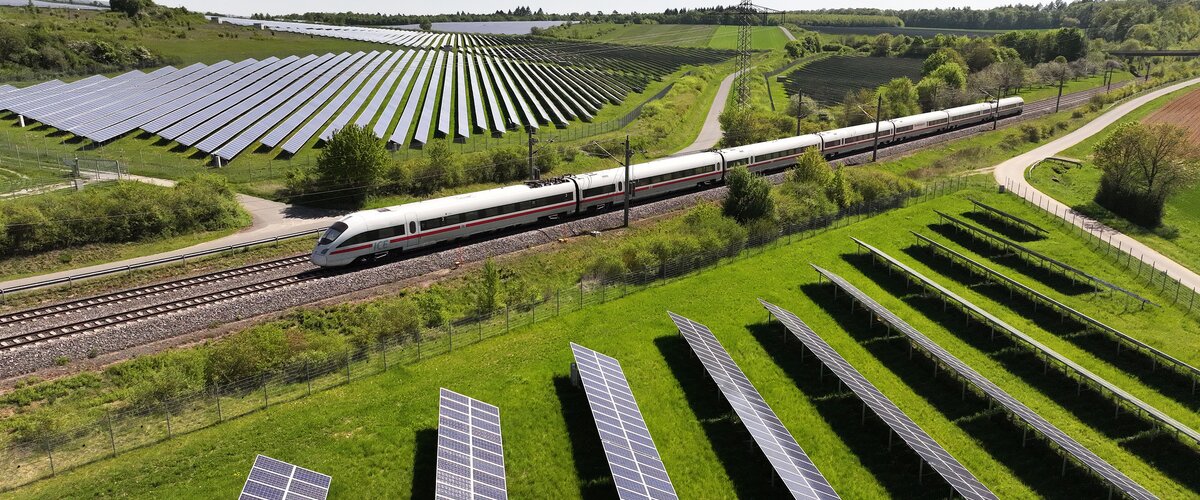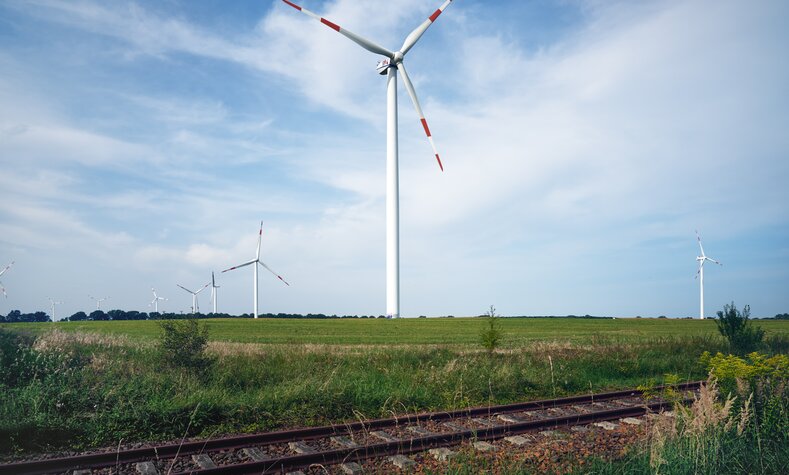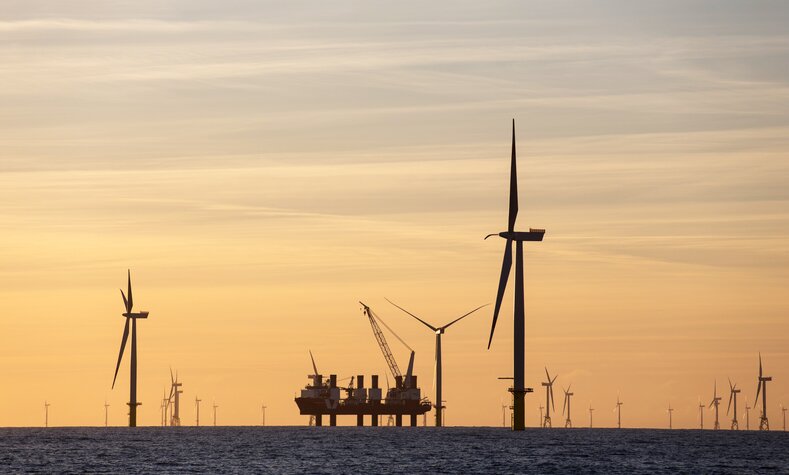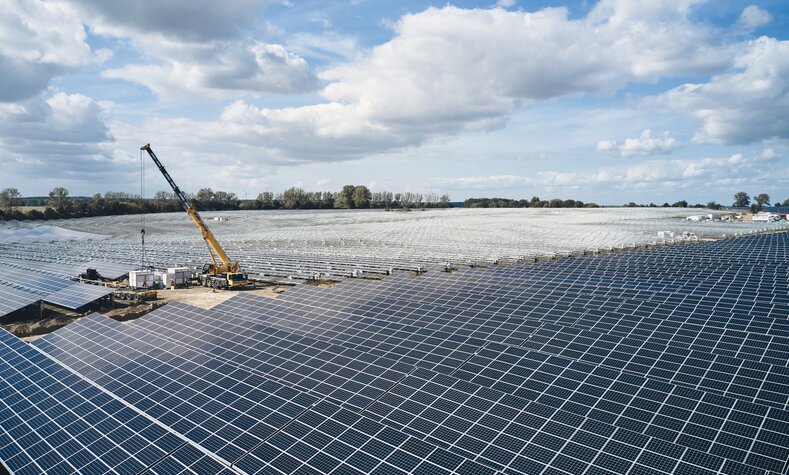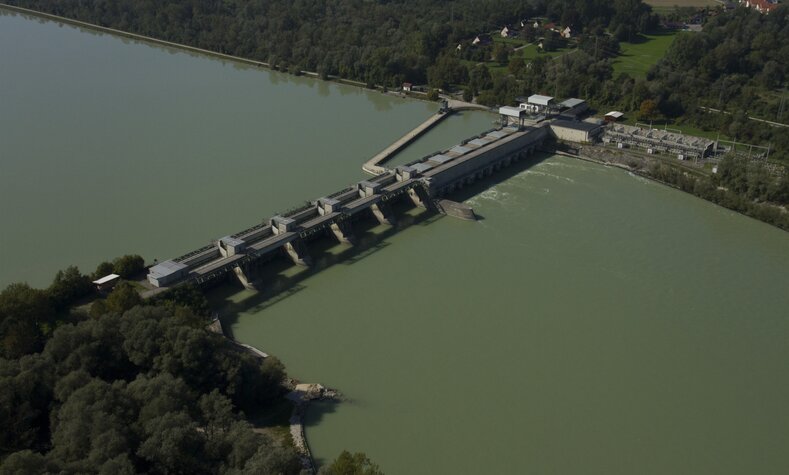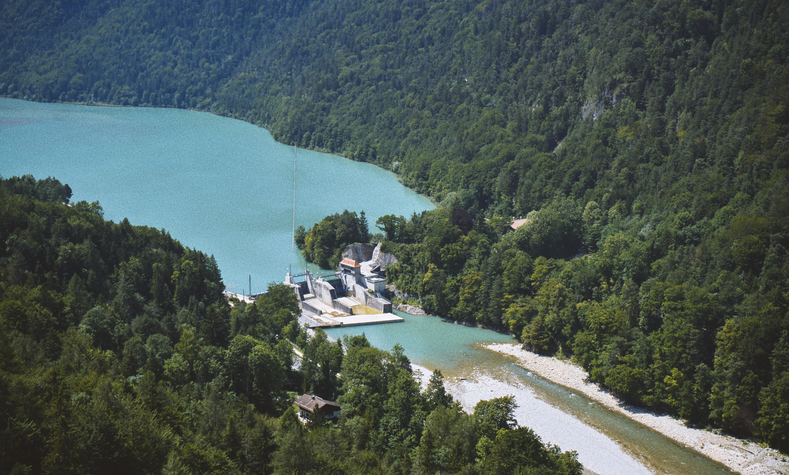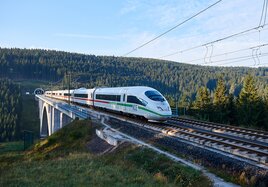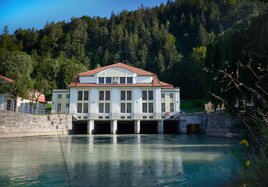In order to achieve German and European climate protection targets, a sustainable shift to rail transport is essential. After all, electrified rail transport is one of the most climate-friendly forms of mass mobility. Deutsche Bahn wants to further strengthen this competitive advantage with its own ambitious net-zero target.
DB's climate protection target is of central importance for the company's financial development and ensures Deutsche Bahn's future viability. By transporting goods and passengers on environmentally friendly railways, DB also supports its customers and the state in achieving their own climate protection targets.
Deutsche Bahn has committed to reducing its greenhouse gas emissions across the entire value chain to net zero by 2040. This target has been confirmed by the renowned and independent Science Based Target initiative (SBTi). In its decarbonization strategy, DB adheres to the SBTi's science-based net-zero standard, thereby following a 1.5-degree path.
In addition to its net-zero goal by 2040, DB has interim targets confirmed by the SBTi:
- In its own operations: By 2034, Deutsche Bahn will reduce its absolute greenhouse gas emissions in Scope 1 and 2 by 66 percent compared to 2019.
- In the upstream and downstream value chain: By 2034, Deutsche Bahn will reduce absolute emissions from energy- and fuel-related activities (Scope 3.3) by 40 percent and emissions from the use of sold fossil fuels (Scope 3.11) by 63 percent. Furthermore, by 2029, 66 percent of suppliers (by emissions volume) of the DB Group’s purchased goods, services, and capital goods (Scope 3.1/3.2) will have adopted science-based emissions targets — a so-called Supplier Engagement Target.
Deutsche Bahn is advancing decarbonization with business-unit-specific reduction pathways based on absolute greenhouse gas emissions. It has identified four specific levers to achieve its net-zero targets according to SBTi.
Increasing the share of renewable energy
Traction power: DB will switch its DB traction power to 100 percent green electricity by 2038 at the latest. Long-distance passengers on DB trains in Germany are already traveling with 100 percent green electricity. Passengers also travel in a climate-friendly manner on local transport: DB customers travel on renewable energy on the Hamburg and Berlin S-Bahn, for example. In Baden-Württemberg and Schleswig-Holstein, regional and local transport passengers also travel on 100 percent green electricity, insofar as rail transport is electrified.
Stationary facilities: Since the beginning of 2025, all stations, maintenance workshops, office buildings, and facilities in Germany supplied by DB Energie have been powered by 100 percent green electricity. This also includes signal boxes, point heating, and track lighting. The increasing use of renewable energies in DB buildings plays a central role in Deutsche Bahn's heating transition.
Phasing out diesel and electrification
Electrification: On the path to net zero, DB is focusing its decarbonization strategy on the further electrification of its rail network. Already today, more than 90 percent of all rail transport services in Germany are provided electrically (based on tonne-kilometers; Ltkm). This share is to be further increased in cooperation with the federal government. However, there will still be routes in the future where goods and passengers cannot always be transported electrically due to geographical or operational constraints. DB is therefore pursuing a technology-neutral approach with alternative drive systems and fuels as a substitute for fossil diesel.
Use of alternative fuels: Alternative fuels allow diesel vehicles to continue operating without the need for technical retrofitting. This is sustainable and conserves resources, as fully functional trains and locomotives do not have to be taken out of service prematurely. DB is currently focusing on HVO (hydrotreated vegetable oil) as a transitional technology. The increased use of biofuel will significantly reduce the demand for conventional diesel in the coming years. The HVO used by DB is produced exclusively from biological residues and waste materials and causes around 90 percent less greenhouse gas emissions than conventional diesel.
Use of alternative drive systems: Alternative drive systems are low-emission alternatives to pure diesel drive systems. That is why DB, for example, has teamed up with Siemens Mobility to test an innovative hydrogen system comprising a filling station, train, and maintenance infrastructure. Battery trains and the associated infrastructure are also used. Battery trains have an accumulator on board that functions like a rechargeable battery. On non-electrified routes, the train draws its energy from the charged battery, enabling it to operate in a climate-friendly manner even without overhead lines.
Increasing energy efficiency
Deutsche Bahn not only wants to continuously expand the share of green electricity in the group. It also wants to use the energy it consumes as efficiently as possible. A key lever in this regard is the Green Rail Technology program, which promotes energy efficiency in vehicles and infrastructure, among other things. This not only has a positive effect on DB's financial resources. It also ensures significant savings in greenhouse gas emissions.
Efficient vehicles: To increase the energy efficiency of its fleet, DB is focusing on measures such as passenger-independent air conditioning control, training train drivers in energy-efficient driving, and feeding braking energy back into the overhead lines. In addition, the technical foundations for future energy-efficient processes are being laid.
Efficient buildings and facilities: To increase the efficiency of stationary assets, DB is automating manual work steps and optimizing processes. For example, self-closing hall doors help to reduce heat loss and save heating energy. The introduction of innovative paint systems for drying at room temperature also ensures savings in energy costs and greenhouse gas emissions.
Heat transition: On its path to net-zero emissions, DB also wants to stop using fossil fuels for heating. To this end, it is working on various concepts and measures. When oil heating systems reach the end of their life cycle, they will not simply be replaced, but rather substituted with climate-friendly alternatives.
Using low-emission building materials
Deutsche Bahn is investing heavily in reliable infrastructure over the coming years. To reduce the greenhouse gas emissions generated in the process, DB intends to make greater use of low-emission building materials. The company is also relying on strong partnerships such as the Zukunftsinitiative Bahnbau (ZIB).
